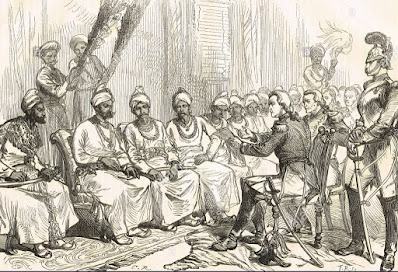The Treaty of Yandabo is the peace treaty that put an end to the First Anglo-Burmese war with the British emerging victorious. The treaty was signed on 24 February 1826, almost two years after the war broke out on 5 March 1824.
The treaty was signed by General Sir Archibald Campbell on the British side and on the Burmese side by the Governor of Legaing Maha Min Hla Kyaw Htin.
The British army had reached Yandabo village which was just eighty kilometers from the then capital Ava. This was one of the main reasons why the Burmese agreed to sign the treaty without any discussion.
Terms of the Treaty of Yandabo
The terms of the Treaty of Yandabo are as follows:
The Burmese agreed to cede Assam, Manipur, Arakan, Tanesserim coast to the British completely without any type of control over these territories.
The Burmese were to stop all interference in Cachar and Jaintia hills.
The Burmese had to pay an indemnity of one million pound sterling in four installments to the British with the first installment being paid immediately. The second installment was to be paid within the next 100 days. The last two installments were to be paid within two years. The British also made it clear that they would not leave Yandabo till the second installment was paid.
The treaty forced the Burmese to allow an exchange of diplomatic representatives between Calcutta and Ava.
The Burmese were also asked to sign a commercial treaty with the British in due course of time. This simply meant that the British were to have more control over trade practices in and with Burma.
Impact of the Treaty of Yandabo
The Treaty of Yandabo brought humiliation and a long-lasting financial burden on the Burmese. During the battle, a whole generation of Burmese men had been wiped out. The Court of Ava could not come to terms with the severe loss of men and their territories. It made several failed attempts to get the territories back.
An uninvited British representative in the Court of Ava was a constant reminder of the humiliation and defeat that the Burmese suffered. The indemnity of one million sterling pounds was a considerable amount even in Europe those days.
The indemnity left the Burmese economy and treasury crippled and thus the Treaty of Yandabo was able to achieve its basic objective. The War and the Treaty also affected the British. For the British, the cost of the war left the British economy in crisis and also bankrupted the Bengal Agency Houses in 1833. The East India Company had to give up its privileges and the British also lost their monopoly of trade to China

